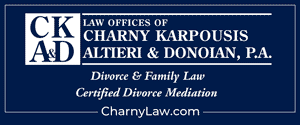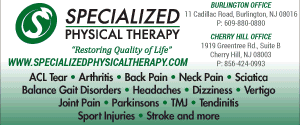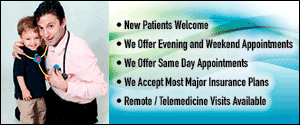
Take it to Heart
Medical advancements and lifestyle changes can contribute to a better quality of life for those at risk of heart disease or stroke.
Although the past year has been consumed with fighting COVID-19, the battle against the usual medical issues afflicting the population has not stopped. In some cases, such as heart disease, COVID-19 actually compounded those concerns.
Heart disease remains the leading cause of death in the United States. The most common type is coronary artery disease, which decreases blood flow to the heart, potentially causing a heart attack. “This is the most dangerous and prominent,” says Dr. Vivek Sailam, cardiologist with Virtua Health. “But then there are other types—congestive heart failure, which is the weakening of the heart muscle; an abnormal heart rhythm known as atrial fibrillation (AFib), which can lead to blood clots.
“Recently, the most serious and most difficult to explain has been heart disease related to COVID-19 infection,” he continues. “We’re seeing patients—some of whom had no prior history of heart disease—who had COVID having a heart attack due to a blood clot in their coronary arteries, which is attributed to COVID-19 causing inflammation in the body. Myocarditis, inflammation of the heart muscle, is also appearing. … To me, this has been a very different type of presentation in patients and we’re seeing it in a varied population. Some had underlying conditions but many do not, and that’s what is making treating this infection so tricky.”
However, knowledge can be the best offense to help reduce the danger. Lifestyle choices such as an unhealthy diet, smoking and physical inactivity can contribute to a person’s risk, as well as medical conditions including diabetes, high blood pressure and high cholesterol. Symptoms of heart disease are not always as obvious as other illnesses, which means people can mistakenly dismiss them. Sailam says pain in your chest, jaw or back when exerting yourself is not as commonly recognized, but may be a symptom. Others include fatigue, erectile dysfunction and even depression in some instances. “I hear from patients that they feel too tired to do their daily activities and their exercise is reduced,” he says. “This can be a silent indicator of an underlying heart issue.”
Sailam says there are no hard-written rules about what age to first get screened for heart disease, but if they are predisposed, to get screened earlier than later. “If you have an immediate family member, a father or mother who has had heart disease, or if they had a heart attack in their 40s, those individuals should be aggressive and vigilant about being screened early—I would suggest as early as their 30s,” he says.
Screening may reveal conditions such as AFib, one of the leading causes of stroke. According to Sarah West, Ph.D., ABPP, board-certified clinical neuropsychologist with Bancroft NeuroRehab, the people most at risk for stroke are those who have vascular factors, including high blood pressure and cholesterol, diabetes, sleep apnea or a history of smoking.
Recognizing the signs of a stroke can have a big impact on treatment and recovery. West says the acronym FAST: facial weakness, arm weakness, speech problems and time, is one of the best tools the public can use. “When someone is having a stroke, there is more likely to be a unilateral motor weakness or numbness, and the speech is also affected. Sometimes there can be sudden vision problems that occur,” she says. “Persistent weakness, cognitive changes, language challenges and comprehension problems may occur. Strokes can also lead to mood and personality changes.”
An emphasis on protocols for recognizing a stroke have contributed to the survival rate. “There is a small window for medications to be administered during a stroke. Once beyond that window the patient may not be able to have it or it may not be as effective,” West says. “Hospitals and medical professionals are better prepared now. Surgical techniques, medications, education, they all contribute to helping people live longer and with fewer deficits than in the past.”
Recovery and Resources
For those who do have heart disease or survive a stroke, there are an abundance of resources available to assist.
Specifically with stroke patients, West performs evaluations to assess a patient’s cognitive function. From there, patients at Bancroft can undergo occupational therapy to help them return to their daily activities, physical therapy to make their body physically stronger, speech therapy for language and memory challenges and also therapy for the emotional side.
“Strokes are a large, life-changing event and individuals may not be able to go back to activities quickly or ever, so it’s an adjustment,” West says. “People can suffer from depression or anxiety that another stroke might happen. Family dynamics change and it’s important to help them through this adjustment.”
Heart disease treatments have also had some amazing breakthroughs, notes Sailam. “There are medications for those with congestive heart failure that can strengthen the heart muscle and decrease morbidity and mortality, prolonging and improving quality of life. … But one of the biggest things is the ability to perform cardiac surgery in a minimally invasive manner with robotics. We can replace a heart valve in a 95-year-old and they can go home the next day. It’s so remarkable to me. When I see it happen, I still do a double take,” he says.
Technology also provides important insight for patient monitoring, whether it’s via smartwatch or other device. Ron Saltiel, chief operating officer of Relievus, says the company instituted remote patient monitoring several months ago, particularly for blood pressure. By measuring and monitoring a patient’s blood pressure from home on a daily basis, it has proven to reduce chronic disease such as heart failure, heart attacks, stroke, diabetes, etc., he says. It was so successful that Relievus started a separate company called DocuVitals to allow other medical practices to use this valuable resource.
“RPM or remote patient monitoring is the process of monitoring a patient’s vital signs remotely from their home in between real-time patient visits. Remote patient monitoring refers to the use of technology to record health data for review by a provider in a different location than the patient,” Saltiel says. “We use FDA-approved, at-home blood pressure cuffs, weight scales, oximetry and blood glucose devices. Generally, only one vital sign is measured per patient. We find blood pressure monitoring is the most common and most useful vital sign measurement.”
RPM puts patients in control of their health, he continues, which increases patient compliance and dramatically impacts their outcomes at reduced costs. “It is a great resource for many physicians caring for patients who are suffering from chronic conditions, are less mobile or are at risk of falling. … Candidates are patients with hypertension, diabetes, obesity, heart issues and elderly patients with comorbidities. … It’s covered by Medicare and most private insurers,” Saltiel adds.
In addition to these treatments and approaches, lifestyle changes remain one of the best ways to begin taking control of your heart health. “So much of our overall health ties into what we eat,” says Sailam. “One of the biggest obstacles we face in the U.S. is the fact that our diet for the most part is toxic to the body. Processed foods and meats treated with hormones and antibiotics lead to inflammation which accelerates heart disease. … When patients come to see me, I don’t want to give them a lot of medications—only when we have to—but I want to encourage a heart-healthy diet, cutting portions back 30 to 50%, and incorporating exercise like walking and resistance training, all of which can make a huge difference overall.”
In addition to these treatments and approaches, lifestyle changes remain one of the best ways to begin taking control of your heart health. “So much of our overall health ties into what we eat,” says Sailam. “One of the biggest obstacles we face in the U.S. is the fact that our diet for the most part is toxic to the body. Processed foods and meats treated with hormones and antibiotics lead to inflammation which accelerates heart disease. … When patients come to see me, I don’t want to give them a lot of medications—only when we have to—but I want to encourage a heart-healthy diet, cutting portions back 30 to 50%, and incorporating exercise like walking and resistance training, all of which can make a huge difference overall.”
Click here to subscribe to the free digital editions of South Jersey Magazine.
To read the digital edition of South Jersey Magazine, click here.
Published and copyrighted in South Jersey Magazine, Volume 17, Issue 11 (February 2021).
For more info on South Jersey Magazine, click here.
To subscribe to South Jersey Magazine, click here.
To advertise in South Jersey Magazine, click here.
To read the digital edition of South Jersey Magazine, click here.
Published and copyrighted in South Jersey Magazine, Volume 17, Issue 11 (February 2021).
For more info on South Jersey Magazine, click here.
To subscribe to South Jersey Magazine, click here.
To advertise in South Jersey Magazine, click here.











